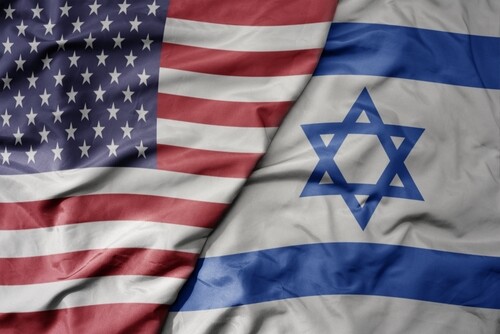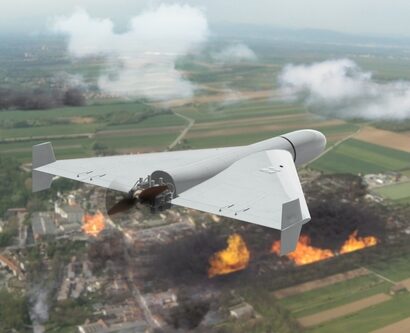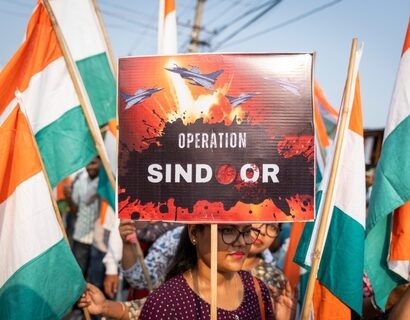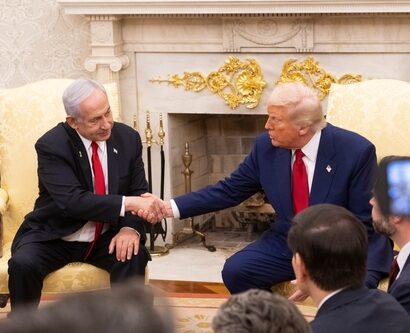Abstract: The U.S. has been historically very active in West Asia, not just after World War II but much before that. The U.S. and West Asia also share the Abrahamic religion; therefore, there are religious affiliations primarily with Jerusalem. The engagement of great powers with this region is also justified by the region’s abundant fossil fuels and natural gas. This region was also a ground for geopolitical rivalry in the Cold War. This region has a long history of authoritarian regimes and various militant groups. So, all these factors collectively contribute to the multifaceted nature of the U.S.’s relationship with West Asia, compelling the U.S. to maintain a strong presence in the region. This paper aims to provide historical insights into this complex relationship and the implications of its sustained focus on the region. Analysing the impact of this complex relationship, the article concludes by suggesting a policy shift, such as revisiting its unequivocal support to allies, pivoting to Indo-Pacific, etc., that suits the U.S.’s future interests.
Problem Statement: How to understand the evolution of U.S. involvement in the Western Asian region?
So What?: The ongoing allocation of resources to support Ukraine and Israel in their conflicts is accelerating the erosion of U.S. influence and straining relationships with other allies in West Asia. This situation amplified distrust between the U.S. and West Asian Allies, creating an opportunity for increased Chinese influence. The U.S. should consider a more practical approach instead of persisting with the current status quo in its dealings with West Asian countries. Reorienting towards the Asian Pivot is essential for counterbalancing China’s influence.

Source: shutterstock.com/esfera
From Isolationism to Interventionism
The U.S. foreign policy in West Asia[1] has roots in the 19th-century Barbary Wars, following the establishment of the U.S. as an independent state in 1776.[2] The region remains strategically, politically, economically, and religiously globally significant in the modern era. This importance is heightened for the U.S. due to energy resources and strategic geography, turning the region into a battleground for major foreign powers over the past two centuries.
After World War II, the U.S. shifted from isolationism (Monroe’s doctrine) to active international intervention. In West Asia, this policy was initially based on three pillars: (I) a bond with Israel, (II) ensuring the free flow of energy from the region, and (III) providing regional security. The U.S. approach to West Asia aligns with its global goals, interests, and priorities. These dynamics shape the importance of West Asia for the U.S.[3]
Theoretical Perspectives on the U.S. – West Asia Partnership
The U.S. has remained engaged in West Asia for decades, driven by domestic and international objectives. Its interest in the region is complex, with various international theories offering distinct justifications for its presence there.
- Realists argue that the strategic significance of West Asia, defined by its vast oil reserves and geopolitical position, is crucial for securing the energy needs pivotal to the United States’ economic and military dominance. They stress the necessity of sustaining influence over the region to deter potential rivals and ensure stability, which they believe is in line with the objectives of the US. Realists advocating for a global balance of power support the U.S. presence in West Asia to address security concerns. They point to historical conflicts, the threat of terrorism, and the challenges posed by non-state actors as justification for this stance. From the realist perspective, America’s role in West Asia is seen as a pragmatic approach to safeguard national interests, protect vital resources, and maintain global power equilibrium.[4]
- Liberals view the United States’ involvement in West Asia as a crucial chance to further democratic principles, safeguard human rights, and assist in conflict resolution. Their approach emphasises the importance of diplomatic engagement, fostering international collaborations, and backing local initiatives to tackle the underlying causes of strife and minimise violence. They believe the U.S.’s role is essential for strengthening West Asia’s economic connections, including trade and investment prospects. For them, this presence is a means to encourage worldwide stability and lasting peace through strategic partnerships, multilateral cooperation, and development aid.[5]
- Constructivists believe that ideas, identities, and norms are more impactful than material forces, differing from the views held by realists and liberals. They point out that shared identities, like religion, act as a cohesive force, visible in the case of the U.S. and Israel.[6] The U.S. commits itself to promoting democratic values, offering a solid motive for its continued involvement, especially given the region’s predominance of autocratic or monarchic regimes. Additionally, historical events such as colonialism, the Cold War, and the war on terror have unexpectedly helped to strengthen these relationships, establishing an interaction pattern that has become the norm for subsequent decades and continues to influence relationships today. The perception of the U.S. as a defender of its allies plays a significant role in preventing sudden changes in international relationships.
- From a Marxist perspective, the involvement of the United States in West Asia is primarily motivated by economic factors, especially the desire to control critical resources like oil. This situation extends capitalist exploitation, where international corporations linked to the US government benefit from the region’s resources. The military presence is viewed as a means to ensure a stable environment for this exploitation and to safeguard corporate interests. Marxists interpret this as part of a broader strategy to uphold global capitalist supremacy. In this light, the US’s role in the region is characterised as capitalist imperialism, aimed at securing economic resources and perpetuating global capitalist dominance. This serves the capitalist class and multinational corporations, sidelining the needs of the working class and the pursuit of social justice.[7]
Factors of the U.S.’s Enduring Presence in West Asia
The U.S. policies towards West Asia have remained largely uniform despite changes in government. One common thread has been the consistently prominent placement of the region on the U.S.’s agenda. Exploring the reasons behind this continuity in the relationship is an exciting exercise.
The Bond with Israel
The enduring bond between the U.S. and Israel stands out for its complexity and domestic political significance, surpassing other longstanding alliances. Despite no formal treaty, the relationship garners more attention and political energy in the U.S. than with other allies. American presidents and bipartisan majorities consistently express unwavering support for Israel’s security, including unequivocal support in the Hamas-Israel War since October 2023. The special U.S.-Israeli relationship traces back to post-World War II, influenced by factors such as Guilt over the Holocaust and a humanitarian impulse to aid displaced refugees in newly settled Israel. Political influence from Jewish donors in the Democratic Party played a significant role. Idealism and religious identification with a shared Judeo-Christian heritage also contributed to prevalent ignorance about the region among Americans. A “strategic relationship” evolved during the Nixon Administration, maturing into a ‘virtual military alliance’ in the Reagan and Bush years during the 1970 PLO crisis, also known as “Black September.”[8]
The special U.S.-Israeli relationship traces back to post-World War II, influenced by factors such as Guilt over the Holocaust and a humanitarian impulse to aid displaced refugees in newly settled Israel.
In the 1950s and the first half of the 1960s, official relations between the U.S. and Israel were generally friendly, with American diplomacy supporting Israeli-Arab peace in line with UN guidelines. Strains emerged due to events like the 1967 Sinai Campaign and the U.S. desire to inspect Israel’s nuclear facility in Dimona. Economic aid and contributions from the U.S. Jewish community helped absorb waves of immigrants. However, no U.S.-authorised military sale occurred before the mid-1960s. In the 1948 War, Israel used Czech weapons, and during the 1950s and early 1960s, France was its principal arms supplier. Therefore, the Six-Day War of 1967 was fought with French weapons. From (1967-1977), the U.S. became a crucial mediator in the Arab-Israel conflict after the 1973 Yom Kippur War. Following this shock, the U.S. provided ‘written assurances’ for Israel’s security in exchange for flexibility in negotiations over Palestinian territorial withdrawals. This era altered perceptions of Israel within the U.S., with vocal commitments to Israel’s security, though often informal and implicit diplomatically.
The U.S. viewed the Arab-Israeli conflict in the context of the broader U.S.-Soviet global rivalry. In this period, Israel’s heavy losses in the 1973 war resulted in its successful requests for significant U.S. military and economic aid. President Jimmy Carter’s (1977-81) tenure focused on Arab-Israel peace-making. His diplomatic success was the 1978 Camp David Accord, brokering peace between Israel and Egypt. This era deepened the US-Israel relationship, increasing commitments, economic and military aid, and fostering military cooperation. During Reagan’s presidency (1981-89), Israel was viewed through a Cold War lens as a democracy in a hostile Arab region. Secretary of State Alexander Haig pursued strategic cooperation, working with Israel and Arab states to counter Soviet threats. This parallel diplomacy proved beneficial during the 1991 Gulf War. President Bush (1989-1993) and Secretary of State James Baker pursued peace efforts aligned with Carter’s vision. The Madrid Peace Conference of 1991 involved all Arab leaders, setting the stage for progress. While relations were occasionally tense, the fundamentals remained intact. President Clinton’s (1993-2001) strong support for Israel and Prime Minister Rabin’s knowledge marked a high point. A comprehensive peace treaty with Jordan in 1994 and a temporary freeze on West Bank settlement expansion improved relations. However, under Prime Minister Netanyahu, progress on the Oslo Accords and Israeli-Syrian negotiations slowed from 1996-99.
Since Lyndon Johnson (1963-1969), each succeeding president has added building blocks to the official relationship between the U.S. and Israel despite occasional diplomatic clashes. Over the decades, their bonds have strengthened. West Asian protagonists view themselves as weaker parties and prefer U.S. involvement as a third-party intermediary over the United Nations or other major powers. The U.S. consistently engages in mediating peace agreements between Israel and its Arab enemies. Israelis have historically placed more trust in the United States than the United Nations or other significant powers due to America’s unique ability to influence and persuade Israel.[9] The U.S. has invested considerable diplomatic effort for regional peace and stability for over a generation. This unparalleled commitment stems from various motives such as historical and religious ties, maintaining global power status, democratic expansion in the region, political gains at home, and strategic interests against adversaries.
Since Lyndon Johnson, each succeeding president has added building blocks to the official relationship between the U.S. and Israel despite occasional diplomatic clashes.
Despite occasional challenges, this unique relationship appears poised to endure for many years, often likened to a periodically troubled but enduring Catholic marriage. Similar to such marriages, both partners must navigate the rough patches and work to resolve them, a pattern observed in this unwritten alliance over the past decades. Thus, it is destined to persist, for better or for worse. [10] The U.S. relationship with Israel is distinct in West Asia; the U.S. can worsen its relationship with other countries in the region to safeguard or enhance its ties with Israel (e.g. the Israel-Hamas war). The U.S. protects Israel by partaking in and signing bilateral and active diplomatic engagement in the region to improve Israel’s ties with other West-Asian countries, e.g., the Abraham Accord in 2020, the most recent one in the list of many.[11] To a significant degree, the U.S. presence in West Asia revolves around improving relations between Israel and other West Asian countries and hence scoring legitimacy for the existence of the Jewish State.
Dependency On Black Gold
Let our position be unequivocal: An attempt by any outside force to gain control of the Persian Gulf region will be regarded as an assault on the vital interests of the U.S., and such an assault will be repelled by any means necessary, including military force.
Jimmy Carter, state of the Union address, Jan. 23, 19
The U.S.’s profound attraction to West Asian oil stands out, beginning when a Standard Oil of California geologist discovered significant oil deposits on Saudi Arabia’s eastern shores. This engagement quickly evolved into an intense focus. In the early 20th century, Western powers, including the U.S., engaged in conflicts in the oil-rich Persian Gulf. In their pursuit of regional resources, the British established a stronghold in Baghdad by 1918. The late 1960s and early 1970s marked a transformative period for the U.S. in its approach to security in the Persian Gulf, prompted by the British ending their imperial presence. In the 1950s and 1960s, U.S. officials and oil executives were concerned about the potential power of Arab nationalists and the threat of oil nationalisation. The U.S. shifted its strategy in the late 1960s under Nixon, focusing on arming and supporting authoritarian regimes as surrogates for American interests. Iran and Saudi Arabia became pillars of this strategy, receiving significant arms sales. This militarisation contributed to regional conflict and heightened instabilities in the 1970s.[12]
President Roosevelt’s meeting with Abd al-Aziz Ibn Saud on the USS Quincy, marked in 1945, was a historic development that permanently linked West Asian oil with American national security. This established a crucial strategic relationship where Saudi Arabia would provide inexpensive crude oil in exchange for American protection. Throughout the twentieth century, preserving the security of Saudi Arabia, the Persian Gulf region, and the flow of West Asian oil ranked among the U.S.’ primary political-economic concerns. Since the late 1970s, the Gulf has experienced revolution and near-constant warfare, with the U.S.-led invasion of Iraq in 2003 representing the newest stage of American militarism in West Asia. The role of oil in regional confrontation has been intertwined for almost four decades. Despite ongoing conflicts, the flow of oil and the network of oil producers have remained unchanged, serving the primary interests of the U.S. in the region. The cost of maintaining the U.S. military presence in the Persian Gulf from 1976 to 2007 was approximately $7 trillion. The escalating use of force underscores American limitations, as relationships with oil-producing nations tied to national security virtually ensure that preparations for the next oil war are underway, even during the resolution of the latest conflict.[13]
A third of the world’s oil is produced in West Asia.[14] With 12.14 million barrels daily,[15] Saudi Arabia alone accounts for 13% of the Global crude oil supply.[16] In 2022, most of the oil worldwide was produced in West Asia, accounting for around 32.8% of the global output.[17] Combined with over-dependency on a region and instability in West Asia, this concentration is unsuitable for the oil market. Oil has become the backbone of the modern industrial economy. The oil price impacts the daily consumable goods. It determines the balance sheet of countries and even world economic growth, which signifies the value of black gold and its largest producers.
A new shift is taking place globally, transitioning towards renewable energy gradually. There is a budding question: will this shift-reduce the geopolitical relevance of West Asia? It may be too early to say this because, given the slower pace of the transition, it may take decades to erode the oil card, which remains at the disposal of West Asia. Nevertheless, countries in West Asia are aware of this global trend and acting in a timely to diversify their economies and gradually reduce their reliance on hydrocarbon exports, e.g. Vision 2030, Project NEOM of Saudi Arabia, capturing over the sports clubs, emphasising tourism & hospitality, financial services, trade and logistics in the UAE.[18] Countries are increasingly using their domestic currencies for trade. For example, India and the UAE signed a memorandum of understanding to trade in their domestic currencies.
Countries in West Asia are aware of this global trend and acting in a timely to diversify their economies and gradually reduce their reliance on hydrocarbon exports, e.g. Vision 2030, Project NEOM of Saudi Arabia, capturing over the sports clubs, emphasising tourism & hospitality, financial services, trade and logistics in the UAE.
Moreover, the potential introduction of a BRICS currency poses a challenge to the Petro-Dollar mechanism. This shift indicates a decline in leverage on both sides, balancing the decline of the U.S. influence in the region with the forthcoming decrease in the importance of crude oil. Nonetheless, a group of strategic thinkers believe that paying the military cost of providing oil to the rest of the world is not in the interest of the U.S.

Roosevelt met with Saudi King Abdul Aziz Ibn Saud on an American cruiser, the USS Quincy, in the Suez Canal in 1945.
Security
Many U.S. administrations have attempted to limit American involvement in West Asia. The immense costs of previous interventions cast a heavy shadow over how policymakers view the risk of wading into the region’s many conflicts. There are currently only three places in the world with sizeable combat deployments of the US military, and all three are in the CENTCOM AOR, of which two are in West Asia, where Army personnel are deployed in Iraq and Syria, both active conflict zones.[19]
The traditional U.S. interests in West Asia focus on securing natural resource flow, nurturing key alliances, and safeguarding allies from external threats to ensure access to U.S. military operations. Over time, West Asia partnerships have evolved from the Cold War “Twin Pillars” strategy, where Iran and Saudi Arabia were pivotal against Soviet influence. The dynamics among regional powers have shifted, with Iran and Iraq, once adversaries, now closely aligned. Intra-state conflict and violent extremism now overshadow inter-state conflict as primary threats to partners. This instability has repercussions for the U.S. and European allies. The Syrian civil war and ISIL’s rise have triggered massive refugee flows to Europe, intensifying economic, political, and security challenges for European allies. Additionally, the emergence of ISIL and lone-wolf terrorists heightens the global terrorism threat to the U.S. homeland and its allies and partners.[20]
The U.S. planned a counterterrorism strategy for the world even after the demise of ISIL’s physical caliphate due to two principal factors. Firstly, even after the end of ISIL, there was fear that ISIL may reemerge if it gets the opportunity for recruitment, training and external plotting; ISIL can become a decentralised terrorist movement following its defeat in Iraq and Syria. Secondly, even after significant damage to ISIL, there is a chance of conflict escalation in both Iraq and Syria to determine the new political order in those countries; US ground forces will be committed to supporting or protecting factions that Washington favours.[21]
The United States and its allies view Iran as their primary concern. Iran presents an ideological challenge to the Sunni West-Asian allies of the United States by questioning their monarchical system and the established order. By supporting Shi’ism in Bahrain, Kuwait, Saudi Arabia, and Yemen, Iran exacerbates sectarian tensions, escalating the regional conflict. Iran’s persistent pursuit of nuclear weapons could spark a nuclear arms race among its neighbours, potentially destabilising the region. An Iran armed with nuclear capabilities would shift the balance of power in favour of Iran vis-à-vis Israel, which the United States cannot allow.
The United States and its allies view Iran as their primary concern. Iran presents an ideological challenge to the Sunni West-Asian allies of the United States by questioning their monarchical system and the established order.
A new concern for the U.S. in West Asia is the need to balance the increasing influence of China. The U.S.’s relative decline and China’s emergence on the global stage have strengthened its influence in West Asia. China brokered a deal between Saudi Arabia and Iran on March 10, 2023, to restore diplomatic relations and the arch-rivals in the region; this has won more acceptance of Chinese influence.[22] This deal was compared with the U.S.-led Abraham Accord, another manifestation of great power rivalry in West Asia. Mediation and negotiation have an old history in Foreign Policy practice, often used as a foreign policy tool to leverage its influence and grow its international stature. As a result, this deal reflected China’s growing international stature, and in doing so, China projected its parity with the U.S.
The United States and its allies in the West Asia region are experiencing a sense of insecurity due to factors such as refugee influx, religious fundamentalism, inter-state and intra-state conflicts, sectarian conflict, the rise of China, and nuclear proliferation. As a result, the U.S. has a vested interest in maintaining security in the region to address these insecurities.[23]
Pivot to Asia?
The U.S. faces persistent challenges in West Asia due to a shortsighted approach, where past policies, once beneficial, have transformed into enduring problems. For instance, the U.S. invasion of Iraq created resentment in the minds of the people and a fertile ground for radicalism, which indirectly evolved into ISIS.[24] A broader perspective on American interests in the region reveals three main concerns: Security, which involves protection against terrorist threats; economics, with West Asia energy resources crucial to the global economy; and securing the interests of Israel.[25]
The U.S.’s unwavering support for Israel in the Hamas War has strained its relationships with allies in West Asia. Despite recent statements from the NSA about relative calmness in West Asia,[26] the conflict has disrupted the normalisation of ties between West Asia and Israel, initiated by the Abraham Accord of 2020, the creation of the I2U2 format summit and the IMEC Project of 2023. This setback may have long-term implications and hinder the U.S.’s “Pivot to Asia” strategy. Additionally, the IMEC, a multi-modal transport and economic corridor connecting India to Europe via West Asian countries, is seen as a vital component of the Indo-Pacific initiative, launched at the G20 summit held in New Delhi just a month before the crisis, now faces considerable challenges.
Despite recent statements from the NSA about relative calmness in West Asia, the conflict has disrupted the normalisation of ties between West Asia and Israel, initiated by the Abraham Accord of 2020, the creation of the I2U2 format summit and the IMEC Project of 2023.
The U.S. role in West Asia has never been constructive; Its interest has never been for its security and development but for the U.S.’s security and development.[27] Therefore, there is a need for a policy shift, as they believe “there are no permanent enemies or friends, only permanent interests.” It’s high time to reconfigure where the interest of the U.S. lies; investing resources in the web of decades-old politics will not lead to futuristic goals.
Ankit Sahu, a Master’s student in International Relations from South Asian University New Delhi, India. His research interests include Ocean Studies, Maritime Security, Environmental Politics, Climate Change & Resilience, and Sustainable Development. The views in this article are the author’s own.
[1] The West Asia region includes the following countries for this paper: Bahrain, Iraq, Jordan, Kuwait, Lebanon, Oman, Palestine, Qatar, Saudi Arabia, the Syrian Arab Republic, the United Arab Emirates, Iran, and Yemen.
[2] Naval History and Heritage Command, “Barbary Wars,” history.navy.military, last accessed July 05, 2024, https://www.history.navy.mil/browse-by-topic/wars-conflicts-and-operations/barbary-wars.html.
[3] Mohammad Mehdi Mazaheri, “USA policy toward West Asia; Interests and futurism,” Www.Ipis.Ir, December 04, 2022, last accessed December 12, 2023, https://www.ipis.ir/en/subjectview/702582/usa-policy-toward-west-asia-interests-and-futurism.
[4] Sandrina Antunes and Isabel Camisao, “Realism,” In International Relations Theory, 15–21, 2017, https://www.e-ir.info/wp-content/uploads/2017/11/International-Relations-Theory-E-IR.pdf.
[5] Jeffrey W. Meiser, “Liberalism,” In: International Relations Theory, 22–27, UK: E-International Relations, 2017, https://www.e-ir.info/wp-content/uploads/2017/11/International-Relations-Theory-E-IR.pdf.
[6] Ian Hurd, “CONSTRUCTIVISM,” In Oxford Handbook of International Relations Oxford University Press, 298–316, 2008, https://faculty.wcas.northwestern.edu/ihu355/Home_files/17-Smit-Snidal-c17.pdf.
[7] Maia Pal, “MARXISM,” In: International Relations Theory, UK: E-International Relations, 2017, https://www.e-ir.info/wp-content/uploads/2017/11/International-Relations-Theory-E-IR.pdf.
[8] “The United States and Israel: Evolution of an Unwritten Alliance on JSTOR,” Www.Jstor.Org, n.d. https://www.jstor.org/stable/4329351.
[9] Idem.
[10] Idem.
[11] The U.S. State Department, “The Abraham Accords Declaration,” state.gov, September 15, 2020, Accessed December 6, 2023. https://www.state.gov/wp-content/uploads/2020/10/Abraham-Accords-signed-FINAL-15-Sept-2020-508-1.pdf.
[12] “America, Oil, and War in the Middle East on JSTOR,” Www.Jstor.Org, n.d. http://www.jstor.org/stable/41510316.
[13] Idem.
[14] Amna Puri Mirza, “Oil industry in the Middle East – statistics & facts,” January 10, 2024, last accessed December 05, 2023, https://www.statista.com/topics/6508/middle-east-oil-industry/#topicOverview.
[15] Statista, “Oil production in Saudi Arabia from 1998 to 2022,” August 25, 2023, last accessed December 05, 2023, https://www.statista.com/statistics/265190/oil-production-in-saudi-arabia-in-barrels-per-day/.
[16] Tyler Durden, “These Were The Top 5 Oil Producers Of 2023,” ZeroHedge, January 08, 2024, last accessed June 05, 2024, https://www.zerohedge.com/energy/these-were-top-5-oil-producers-2023.
[17] Statista, “Distribution of oil production worldwide in 2022, by region,” January 17, 2024, last accessed June 05, 2024, https://www.statista.com/statistics/277621/distribution-of-global-oil-production-by-region/.
[18] Dubai.com CITY GUIDE & BOOKINGS, “UAE Economy: A Period of Remarkable Growth and Diversification,” Dubai.Com, last accessed June 05, 2024, https://www.dubai.com/blog/uae-economy-period-remarkable-growth-and-diversification/.
[19] Karl P. Mueller, Becca Wasser, Jeffrey Martini, and Stephen Watts, “U.S. Strategic Interest in the Middle East and Implication for the Army,” Rand, 2017, https://www.rand.org/content/dam/rand/pubs/perspectives/PE200/PE265/RAND_PE265.pdf.
[20] Idem.
[21] Idem.
[22] Aaron David Miller, “4 Key Takeaways From the China-Brokered Saudi-Iran Deal,” Foreignpolicy.Com, March 14, 2023, last accessed May 06, 2024, https://foreignpolicy.com/2023/03/14/china-brokered-saudi-iran-deal-explained-diplomacy-biden/.
[23] Paul Pillar, Andrew Bacevich, Annelle Sheline, and Trita Parsi, “A New U.S. Paradigm for the Middle East: Ending America’s Misguided Policy of Domination,” Quincyinstitute.Org, July 2020, last accessed May 10, 2024, https://quincyinst.org/wp-content/uploads/2020/07/Ending-America%E2%80%99s-Misguided-Policy-of-Domination_FINAL_COMPRESSED.pdf.
[24] Ofer Israeli, “US Invasion of Iraq, 2003: Indirect Link of ISIS Rising,” Contemporary Review of the Middle East 10, no. 2 (March 30, 2023): 188–201, https://doi.org/10.1177/23477989221150678.
[25] Brian Katulis and Peter Juul, “Strategic Reengagement in the Middle East: Toward a More Balanced and Long-Term Approach for U.S. Policy,” Americanprogress.Org, December 2021, last accessed June 05, 2024, https://www.americanprogress.org/wp-content/uploads/sites/2/2021/12/MiddleEastStrategy-report.pdf.
[26] Gal Beckerman, “The Middle East Region Is Quieter Today Than It Has Been in Two Decades,” Theatlantic.Com, October 07, 2023, last accessed April 12, 2024, https://www.theatlantic.com/international/archive/2023/10/israel-war-middle-east-jake-sullivan/675580/.
[27] Mohammad Mazhari, “U.S. role in West Asia has never been constructive: Indian professor,” Tehrantimes.Com, December 23, 2020, last accessed December 05, 2023, https://www.tehrantimes.com/news/456098/U-S-role-in-West-Asia-has-never-been-constructive-Indian-professor.





